The Future Workforce



































































































































































Nicole Anderson is a communication professional and freelance writer. She holds a master’s degree in Strategic Communications from Westminster College and a bachelor’s degree in Environmental Studies from the University of Utah.
She is a certified Utah Master Naturalist in Wetlands, and has spent many years researching the Great Salt Lake. Anderson co-founded the blog, Summer of Salt, where she spent three summers exploring the shorelines of Great Salt Lake. In 2010, Anderson was commissioned to write, “Patterns of Change” which documented bird and human usage in Bear River Bay, and she later had a role in the 2012 documentary, “Evaporating Shorelines.”
Anderson teaches intercultural and interpersonal communication at Salt Lake Community College. She has written as a freelance author for ten plus years. Her stories and articles have appeared in Airboating Magazine, Gateway Magazine, Utah Stories, and Utah Life Magazine, among several other print and online publications. Anderson has a passion to protect landscapes and places that cannot speak for themselves.

During his 18 years in the Money section at USA Today, Del Leonard Jones wrote more cover stories from 1992-2010 than any other reporter. He was nominated for a Pulitzer Prize in beat reporting, and interviewed the leading CEOs of the day, including Bill Gates, Jack Welch, and Donald Trump, long before Trump became president.
Del has written two historical novels, At The Bat: The Strikeout That Shamed America, and The Cremation of Sam McGee. At The Bat, based upon the poem Casey at the Bat (as told from the umpire’s point of view) ranks as the Goodreads third best baseball novel of all time. Del was born in Salt Lake, but moved away when he was three-years-old. He returned to the state in 2021.

Del lives in Helper and teaches news writing and journalism ethics at Utah State University. He received a journalism degree from the University of New Mexico, where he was taught journalism ethics by mystery writer Tony Hillerman. Jones received an MBA from the University of Texas at El Paso. Married to Dianna for 37 years, he has two children, Ciera and Doug. He has officiated high school and collegiate sports in softball, basketball and field hockey.
Laurel Dudley is a freelance journalist and has written for Triathlete, Hawaii Business Magazine and Swimmer Magazine, among others. She loves capturing people’s stories, especially those about athletes overcoming adversity.
Previously, Laurel spent 15 years in Hawaii, where she met her husband, and worked in medical device sales. They moved to Ogden Valley in 2021, and although Laurel is happy to return to winter sports (which she did as a kid growing up in Vermont), running and off-road triathlons are still her favorite pursuits.



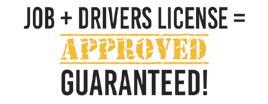
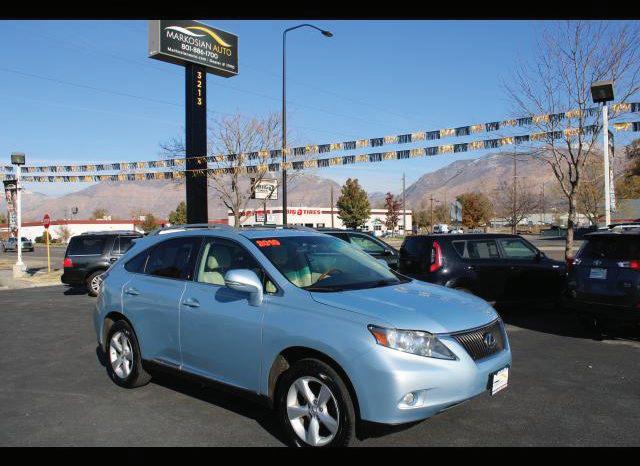

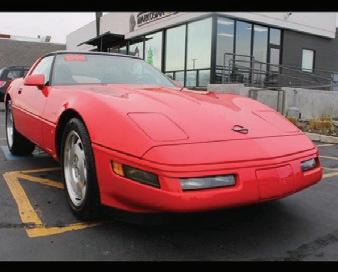
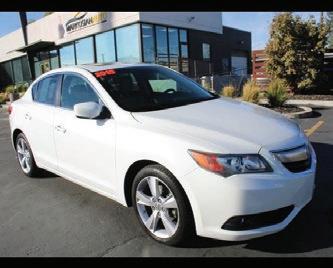
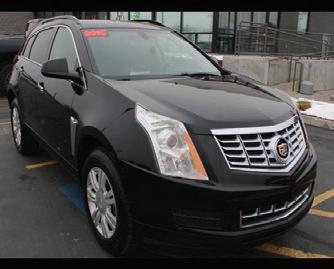

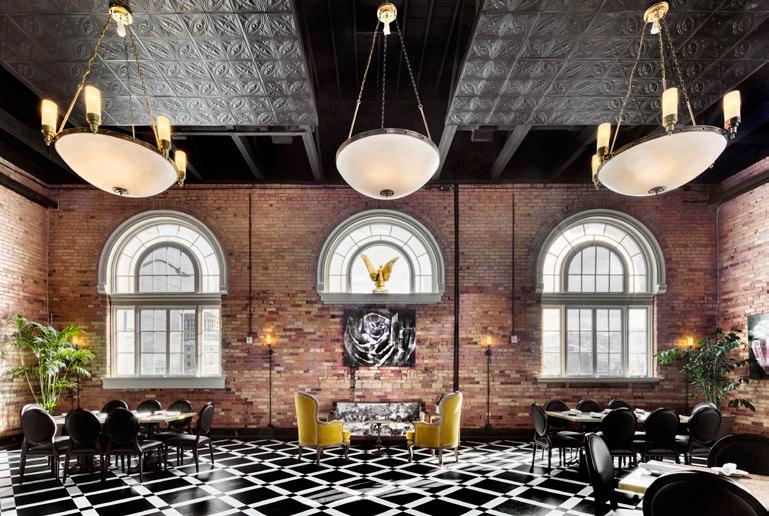
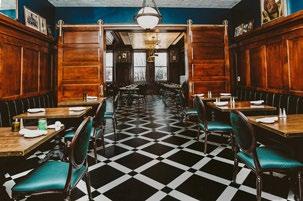
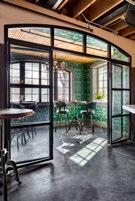
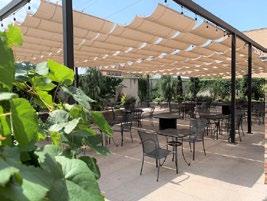
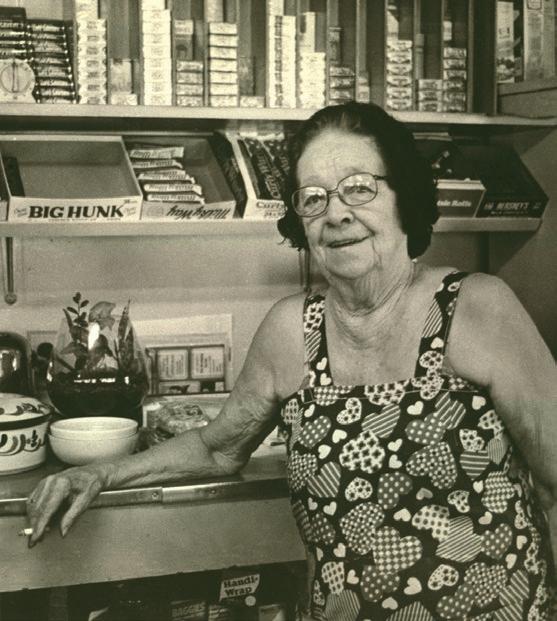
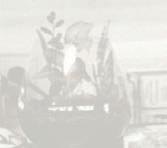
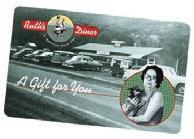
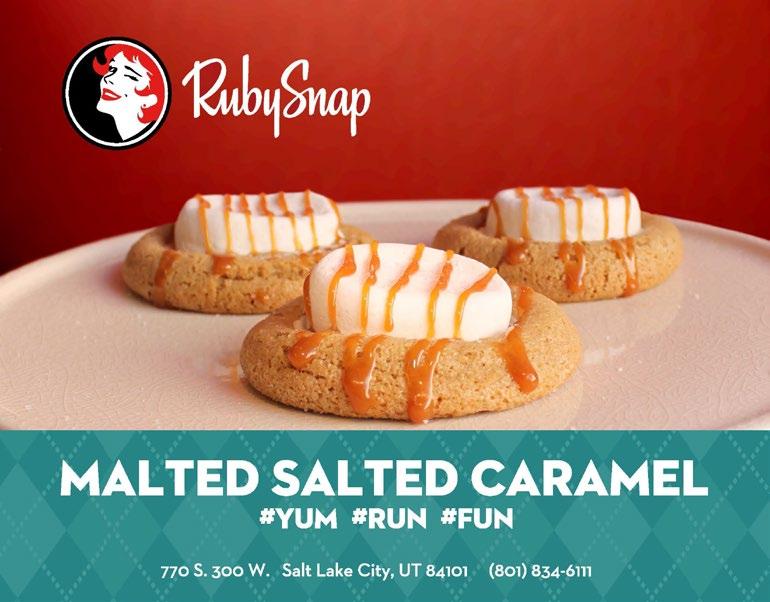
Hi Richard,
I am a subscriber to Utah Stories who is very appreciative of the content you provide to residents of SLC, or those who are going to move back in the near future. I grew up in Salt Lake in the 50’s and 60’s until I moved away. There is obviously a draw for me to live there, and I have moved back 5 times in the years after 1969. It makes me sort of sad to see what is happening with the politics there, obviously the homeless situation, the proliferation of the expensive highrise condos and apartments and the control and influence of the LDS Church. It is not quite the same, but I am probably going to give it another try again soon.
I recently subscribed to Salt Lake Magazine and found absolutely nothing of interest to me, or any ordinary citizen for that matter, who lives in or cares about Salt Lake and what is really going on. I would not expect to see a story in Utah Stories about the ballet or the Nutcracker, plus the Salt Lake Magazine is about 80% advertisements and I really dislike that. I know you have ads in your magazine, and I know that it is necessary in order to be able to publish this wonderful publication for free, and I would like to contribute $ to keep it alive after I move back instead of paying for a mail subscription to my home in Oregon where I now live, and can easily find it at Millie’s in Sugarhouse. That is where I first saw Utah Stories on the counter many years ago. I have been eating at Millie’s since high school and it is my first stop whenever I visit. I have had many conversations with the girls there over what has happened to Sugar House (sad), and we agree on the love of Utah Stories.
I called and canceled my Salt Lake Magazine subscription this week, and when asked for the reason, I was blunt. I said that if they wanted to publish an interesting and informative magazine about SLC, they should contact you and your article contributors about how to go about it because you are the voice of local Utah, not just the rich and famous who close their eyes to the real issues going on (such as homelessness). I would like to see you address the issue of tiny home communities, not just for the homeless, and the possible rezoning to make them possible for everyone (without offending the nimby’s) like they are in Portland and all over Oregon. I did like the article about the Other Side Academy.
Sorry for the lengthy email, but I wanted you to know how much I enjoy reading the magazine and listening to your podcasts. I don’t know when my subscription is up for renewal, but I will be re-subscribing when it is if I get a notice.
Visit UtahStories.com for exclusive online content including our Utah Stories podcasts.

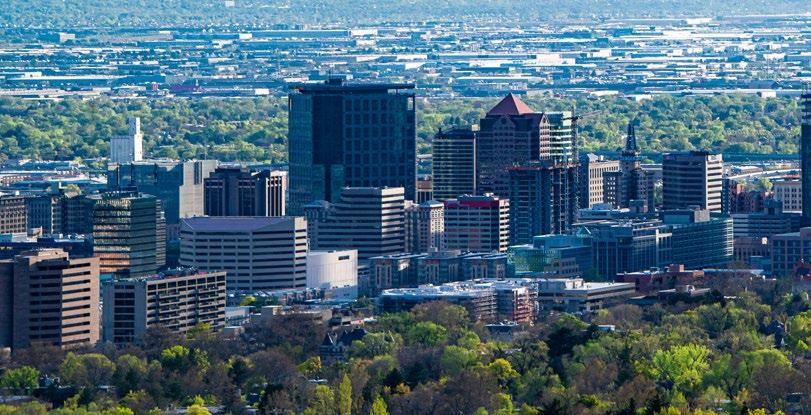
“In the next two years, the population of downtown Salt Lake City will double,” says Dee Brewer, Executive Director of the Downtown Alliance. With dozens of new apartments rising, and a massive influx of residents, Salt Lake City is the seventh fastest growing city in the country, and Utah is the second fastest growing state.
Today, we are finally witnessing quite a few pedestrians in Salt Lake City! Those wise prognosticators who, 40 years ago, decided to wipe out angled parking for wide and vast sidewalks
were right after all! (They were just 35 years late in their prediction coming to fruition.)
It is somewhat sad that small Lake City will very soon be a thing of the past, and all of the small, charming little shops are going by the wayside while bigness is being adopted everywhere: big malls; big shops; big buildings; big hotels, with a small spattering of cool little shops and bars.
While I’ll always miss the Salt Lake City I grew up in, it’s more effective to embrace progress and the growing
BY RICHARD MARKOSIANmajor metropolitan hub that Salt Lake City is becoming, than to lament the mistakes along the way. Density creates excitement, vibrancy, economic vitality, and a creative class of individuals who can build places that can be quite special and unique.
While we have been reporting on the growing homeless population, we haven’t reported much on the growing working-class and student population downtown, so we thought we’d venture down to SLC’s artery and see who we would meet.
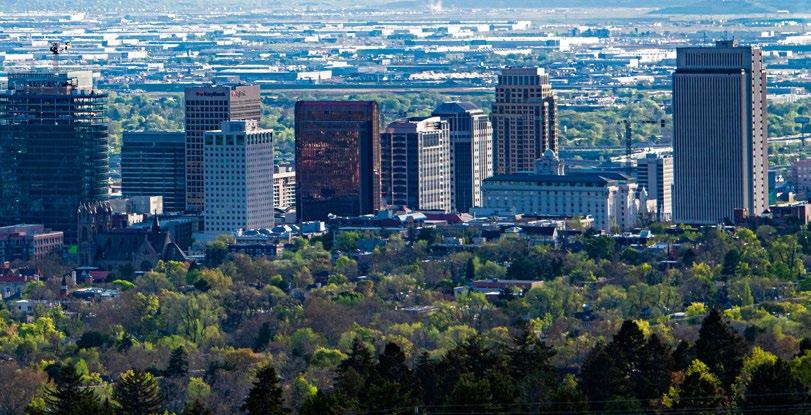
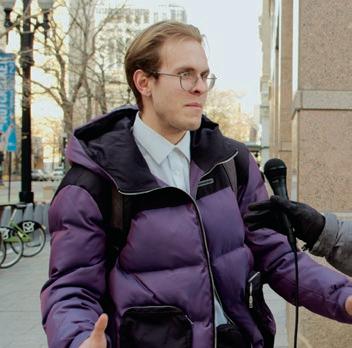
Who are these people? How is Salt Lake City’s creative class shaping up? How will they shape, create and build the capital city in the decades to come? The questions we asked were simple: “What do you love about Salt Lake City,” and “What do you not love?”
Ike, who recently moved to Salt Lake
City from Houston, Texas, said, “People here are really nice. The food here is okay. It’s also really clean here.” But he added that Salt Lake’s food scene was “lacking,” and he wished for a “more diverse food scene … There is a lot of great Mexican food where I come from; there isn’t so much here.”
Ike’s friend Oyonan had been in Salt Lake City for a day, and said, “I love the cold, and the snow and the mountains. It’s so much nicer here.” He compared it to his hometown of Houston, where he said, “It’s muggy all the time.”
Both men said that they were surprised by the homeless population.
“When I first moved here,” Oyonan said, “I was kind of shocked because there are so many homeless people here. I don’t know if it is really safe. I walk around to get some fresh air.” But
Ike concluded by saying, “I think it is pretty solid here.”
A group of students from West High School were on a skating field trip at Gallivan Plaza. Most of them said they love downtown’s City Creek and Gateway Centers, but many disliked the snow and pollution caused by the inversion. One young teen said he disliked the “incredibly high interest rates that Bank of America was charging,” and added, “There are also too many gingers here!”
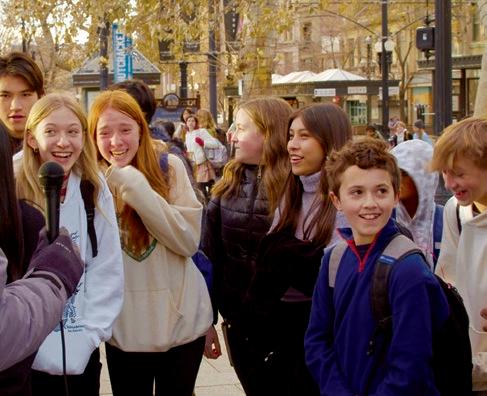
Interviewing a couple of young men who I would affectionately describe as punks, Blair, who has blue hair and was wearing a Marilyn Manson shirt and black leather, said that Utahns are “far too judgemental.” And he says that he is treated like he is some kind of mistake. He was recently and for no reason called a “homophobe” by a bystander.

Both young men, who reside in
Glendale, said they disliked the rising crime and homeless population and sometimes felt uneasy walking around.The problems with the growing number of homeless and the escalating crime seemed to be a common sentiment.
Students who were attending Neumont University arrived in Salt Lake recently, and surprisingly, even Jean Pierre from Delaware, said that he sometimes feels afraid walking around at night due to the homeless and “some people who appear sketchy.” Nearly every Neumont University student said they love the fact that there is so much to do at night. Justin Williams
Salt Lake also puts on a lot of events. Every Tuesday, I think it’s called twowheel Tuesday, and everybody goes around on bikes. There is always activities and something going on especially on the weekends. When I’m walking home late at night on Fridays, there are always people at the bars. I seen some guy who had a robot walking around. That was just kind of fun to see.
Regarding the worst of Salt Lake City, Williams had this to say:
I’m not a very religious person and I don’t want to dog on the The Church, but the Church has a hand in a lot of things. And I
feel like a lot of political things are influ enced by the church ideals, and I don’t feel like that is the best route for progression and moving forward as a city and being inclusive and things like that. I’m just very individualistic. If they aren’t messing with you, why mess with them?
Still, there was a lot of love for downtown’s “ease of getting around” for those with a transit pass, which is offered to downtown students.
Jacob Church said, “For me, I like the ease of getting around with the public transport and with the mall nearby. There is so much to do here. I’m from Arizona Pinetop. It’s a mountain town.”
Just having the transport from the school is very nice, because we get free bus and free Trax. We live at 300 East.”
Another student, Jerry Eller, who has been in Salt Lake City for just a month and a half, said that, “The community has been very inviting.”
Concerning safety in Salt Lake, we also heard the opposite sentiment from two young interna tional ladies working in Salt Lake City. Demi, from the South of Holland said, “I always feel safe walking around. I never have felt scared or afraid. It feels very safe here.”
Her Friend Faviola from Mexico said that while the homeless situation here isn’t great, “It’s not nearly as bad as it is in Mexico City, where the government does nothing to help the homeless.”
Demi said, “It seems like here, they aren’t doing nearly enough to help the homeless. There isn’t really a safety net. But where I am from, we don’t have homeless [people], really. That isn’t really an option. But they offer people too much, too many safety nets, so people [in Holland] are just choosing not to work.”
Demi and Faviola are happy that Main Street is now free from the homeless population, but they know that on 300 West, it is a completely different story.
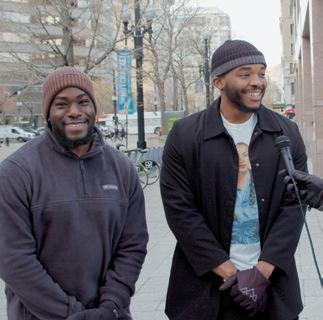
“I was doing outreach and looking for the homeless to give away things for my work,’’ Demi said, “and I couldn’t believe how I couldn’t find any around here, but I found them all around the Gateway.”
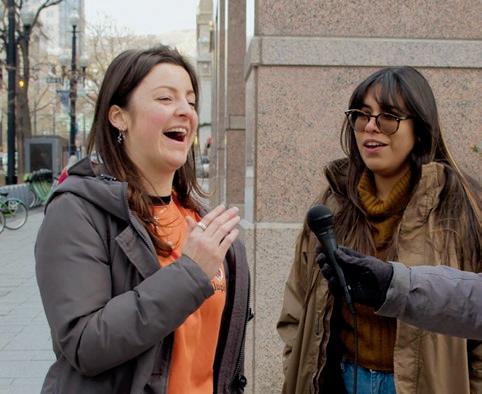
Linda Southam called the police “again” one morning to dislodge a passed-out homeless man who wouldn’t budge from the entrance.
The founder and co-owner of Southam Gallery told the officer, “You need to be a little more mean so they don’t come back.” The officer replied, “Ma’am, I have to do this a hundred times a day. I can’t be mean every time.”
“The police are so taxed and burned out,” said Kimberly Southam, Linda’s daughter and co-owner. The Southams, likewise, were taxed and burned out, and, with no solution in sight, they relocated from a downtown ground-level shop in the shadow of high rises at 152 S Main Street to an old house at 7160 Highland Drive in Cottonwood Heights.
The decision wasn’t easy after 40 years downtown and it won’t land the gallery in the Harvard Business Review. The new store is on a busy street with free parking, but has little foot traffic. Rent is double and sales are halved. Gone are the tourists willing to pay an average $3,000, and as much as $30,000 for a painting of Utah’s landscapes and cityscapes by artists as wellknown as Richard Boyer.
Most repeat customers are lost forever, but Kimberly said the gallery had little choice but to join a small-business exodus from near Temple Square that includes Beckett and Robb, Lamar Lisman Studios, Hope Gallery, Weller Book Works,Twisted Roots, and the Italian restaurant, Cinegrill.

Southam’s customers, though fewer in number, don’t have to fend off serial pan-
BY DUNG HOANGhandling. The Southams no longer mop human feces and urine from the sidewalk each morning and they are no longer trapped inside at closing time because someone “crazy like” is outside the door, Kimberly said. They no longer are awakened by 2am alarm alerts that uprooted sleep with a 20-mile drive, only to verify that an “unhinged” homeless man had pounded his fist on the shop window.
Some street-level businesses downtown are hanging in, even thriving. “You know, it’s never been too much of a problem for us, and the houseless have been respectful,” said Gabby Nelson, general manager of Eva’s Bakery at 155 S Main.
When she encounters a problem, Nelson said she reaches out to the Downtown Ambassadors, who patrol the streets daily, steering people to shelter, food and other services.
Kimberly Southam said she suspects that the bakery’s customers are professionals in high rises, who hustle there and back. Dwindling, she said, are window shoppers and those going to dinner and a show at the Eccles Theater.
The Central Business District has 54% fewer office workers than in 2019 because many still work remotely, said Dee Brewer, executive director of Downtown Alliance, which manages the ambassadors.
Nevertheless, the “social economy” thrives, Brewer said. Twelve restaurants closed during the pandemic, but 21 have opened in the last 12 months. Brewer had no data on the number of businesses that have left downtown, but he said labor shortages and rising costs are most often cited as reasons.
“Downtown businesses reported a higher incidence of encampments and drug traffic this summer,” but there has been a decline since September due to the am-
bassadors, policing and the onset of colder weather in the valley, Brewer said.
Warmer weather will return and the homeless problem is “out of control,” said Ken Sanders, owner of Ken Sanders Rare Books that remains downtown. After 26 years, he is considering closing the store at 268 S 200 E to sell strictly online.
“Whoever thought Salt Lake City would have dangerous neighborhoods?” said the 70-year-old Sanders, who said an employee arrived at the bookstore one morning to find a homeless woman at the entrance covered in blood. “I have to deal with these people more days than not. I treat them with respect, but they are drugged out of their minds, or clearly off their meds.”
Downtown business owners said they have empathy for the homeless, but the problem is complex and immune to solutions.
“It makes your heart sick,” said Kimberly Southam, who donated to the St. Vincent de Paul shelter. The homeless deserve compassion, but she grew weary of waiting for progress, and for reciprocal compassion for small downtown businesses. “No one said, ‘We’re sorry you’re leaving.’ It’s like, ‘Oh, who cares? They’re gone.’”
Salt Lake is headed the way of Los Angeles, San Francisco and Portland, Kimberly said, and Main Street has already gone the way of East Broadway, where Southam Gallery leased for 28 years before moving to Main Street 12 years ago. The landlord on East Broadway never found another tenant and vacancy has led to graffiti and blight.
Southam Gallery may not survive in Cottonwood Heights, Kimberly said, but “I love that I don’t have to look out the window and be depressed when I see someone going by with a shopping cart.”
 By Laurel Dudley
By Laurel Dudley
Shaunell Runsted loves her job. She is the lead housing and benefits specialist at Volunteers of America Utah, which employs over 300 people, and where she’s worked for the past 10 years helping Salt Lake City’s homeless.
But there’s something she doesn’t love, and it’s happening more often.
Last week, during one of her shifts, she said a man who was homeless asked for help. She recalled him saying, “I don’t think I can do another winter.” Runsted recommended some resources nearby and told him she could add him to the waitlist — but it’s 40 people long. Another waitlist
for people wanting housing following substance abuse treatment is 30 people long.
“We just don’t have enough staff to take on new clients,” she said. “It can feel draining because it’s hard to watch people lose hope. It doesn’t feel good.”
In November, Utah ranked No. 1 in the nation for the state with the lowest unemployment rate, which was 2.2%, according to the U.S. Bureau of Labor Statistics. While that’s generally seen as a positive sign for the economy and good news for job seekers, it also creates problems.
Employers everywhere, across nearly all industries, are confronting hiring challenges.
Mark Knold, chief economist at the Department of Workforce Services, isn’t surprised by the job market. He points to the baby boomer generation that’s steadily aging out of the workforce.
“This labor shortage has been 60 to 70 years in the making,” he said. “You have an economy that’s been stretched to its maximum size, and you don’t have enough people to backfill it.”
These sorts of changes usually happen slowly, he said, but the pandemic took “the underlying trends and slammed them right to the surface.” While a recession or economic slowdown might ease the hiring strain, it will be temporary. “When the economy goes back to ‘normal,’” Knold said, “normal is labor shortages.”
Janida Emerson is the CEO of Fourth Street Clinic, which provides medical care to homeless adults and children in Salt Lake City. She is currently looking to fill 16 positions, or about 20% of her staff.

“We always are going to prioritize patient care,” said Emerson. “The real shuffle comes out on the back end. Some of those less urgent admin tasks start to back up.”
The nursing director floats to the floor more often because they are short
on medical assistants. The front desk supervisor spends more time in the waiting room with patients because they’re short a waiting room ambassador. Others have stepped up to cover case management. An EMT position has been vacant for more than six months.
Fourth Street Clinic wants to grow in order to serve more people, Emerson said. But right now, that plan is hampered by a lack of qualified job applicants.
“Frontline triage positions are always really hard to recruit for.”
Aside from hiring, Emerson has spent a lot of time thinking about how to retain staff. “We have had to be really creative thinking about how to continue to work with our employees so that they want to stay here, because the job market is so competitive right now … We have put a lot of time and energy into thinking about how to build a culture where people feel supported.”
For the first time, the strategic plan for 2022 includes an initiative related to recruiting and retaining staff, something they hadn’t focused on before. It’s given her latitude to think about, “What else can we do to show people that we value them?”
Emerson is optimistic that these initiatives will pay off. “I think as you develop a reputation in the community for being an organization where people feel included, where they have a voice and that voice is heard and they’re part of a team
and community, not just a cog in a wheel, you will start to attract more people.”
Trevor Hudspeth, a recruiter at Volunteers of America Utah, is in charge of filling 45 job vacancies. Before the pandemic, he managed between six and 15. The vacancies, he said, are the
Cheyenne is in Salt Lake City “waiting for housing”. She says the current waiting list is three years, and she has not been able to maintain the same caseworker for more than a few months.


result of not only staff turnover but also growth within the organization. It’s led him to shift some hiring practices. For example, he decided against using automated resume parsing software out of concern that it would pass over viable candidates.
Staff typically work in one program, he said, but over the past two years, many worked across programs and also overtime.
Runsted was one of them. When the pandemic left the organization severely short-staffed, Runsted paused her job in case management to do “anything to keep the facility going,” including serving meals and managing the front desk.
“It was very important. You understood that if we don’t stay here and do this, then no one’s going to be here for people who need it. Where are they gonna go when they have nowhere to go?”
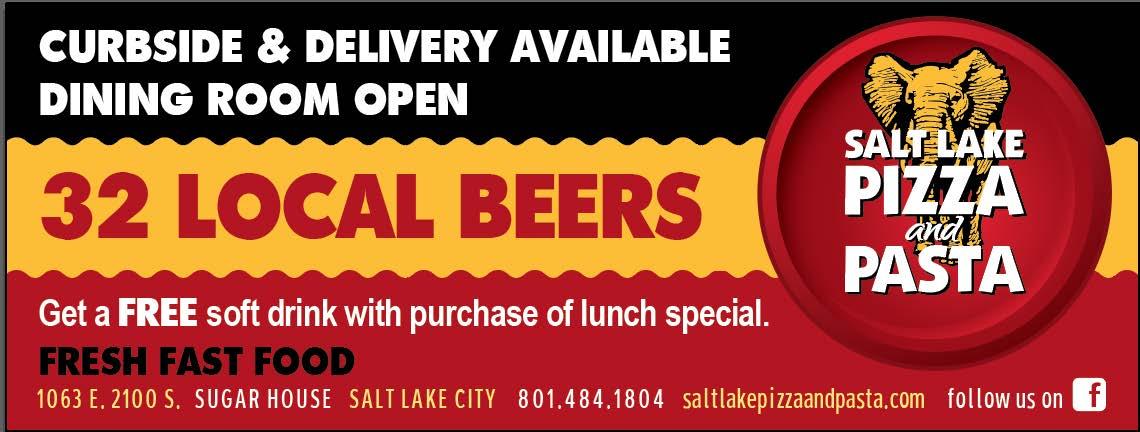

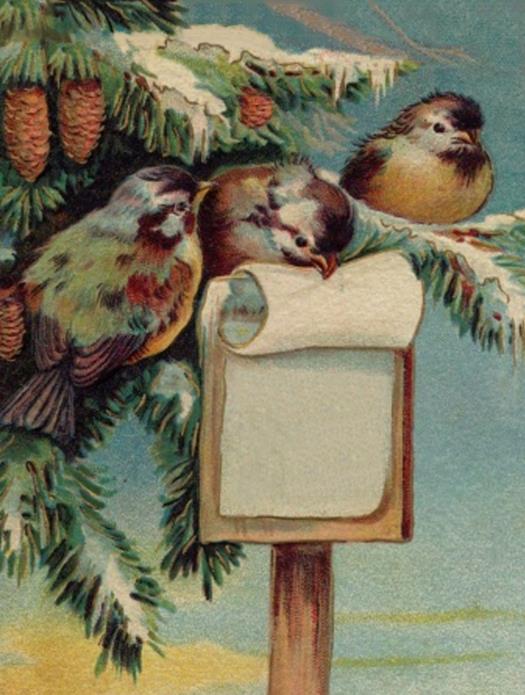
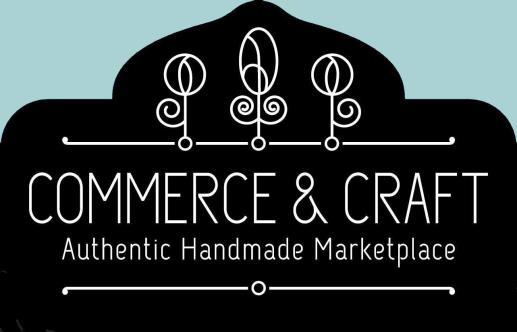


When Russell Aaron began a new job in January 2020, challenges due to his autism spectrum disorder made it difficult for him to go into the office five days per week.
“Russell is directionally and visually challenged,” said Aaron’s mother, Marie. “He is sensitive to noise, has challenges sleeping, and has anxiety driving a car. These things made going into the office difficult for him.”
When the COVID-19 Pandemic emerged in March 2020, Aaron was able to begin working remotely, and many of his fears and anxieties were put at ease.

“Working remotely was a great blessing as his job performance improved,” said Marie. “The time saved from commuting to work allowed more time to rest, exercise, and eat healthier. Instead of catching the bus to and from work, he could catch an extra hour of sleep and enjoy meals without rushing.”
In December 2022, Aaron’s company announced that their employees would be required to work in-office twice per week.
Aaron is discouraged by his company’s decision to require in-office work and feels it may impact his mental health and his ability to perform his job at the level he was
performing remotely.
“I work an insurmountable amount better from home,” said Aaron. “There’s less distraction, more rest, and accommodation.”
Aaron’s story is similar to many who have found that effects of the COVID-19 Pandemic have taken a toll on their mental health.
“A number of my clients are having a hard time re-integrating into society,” said therapist Nathan Watkins. “A few of my clients are having a hard time even getting to the grocery store. There’s a general worry about confrontation, germs, and disease. There are a lot of uncertainties and things people are uncomfortable with.”
These uncertainties and concerns are causing some to look for remote work in order to avoid the uncomfortable re-adaptation into a post-COVID society.
“Many of my really anxious clients are looking for remote work,” said Watkins. “We’ll see a development in OCD or anxiety patterns where the person avoids things they’re uncomfortable with. The avoidances start to cause them distress and they seek therapy.”
Therapists at Wasatch Family Therapy discovered that, for some, the Pandemic added to anxieties they already had, and brought certain behaviors to the surface. As these behaviors come to the surface, the person finds a need to enroll in therapy to address these issues that COVID-19 brought to light.
“Navigating relationships during COVID-19 brought lots of knowledge about things that were working and things
that weren’t,” said Watkins. “Looking at our numbers, we went from having 80 to 100 new-client inquiries a month in 2019, to 250 in 2020, and now we’re averaging 350400 per month.”
This influx of clients, along with a therapist shortage in Utah, has led to longer wait times for those who are seeking to begin therapy.
“I think there’s a culmination of a therapist shortage and the COVID-19 Pandemic,” said Watkins. “Utah was short a few thousand therapists in 2015, so there was already a deficit. Then, we had a huge 2020 population bloom in Utah, and now COVID-19 hits and everyone is seeking mental health resources. It’s hard to catch up once you’re already behind.”
Right now, the waitlists at therapy centers are a few weeks long, but Watkins encouraged potential clients to not be discouraged by the longer-than-usual wait times and to take the necessary steps to find a therapist that is a good fit.
“I think therapy is always a great reference for anyone,” said Watkins. “Talk to your friends and family and see who they recommend. Often a recommendation leads to a better fit for the client.
Watkins recommends resources like therapy blogs, the book No Bad Parts by Dr. Richard Schwartz, and the Evoke podcast to those looking to begin their therapy journey sooner than an office visit may allow.
“It’s really hard to reach out when we’re feeling low,” said Watkins. “The first step is always the hardest. Reach out to therapists. Don’t give up. Keep trying to find a solution. When it happens, it happens and it feels good.”
MANY OF MY REALLY ANXIOUS CLIENTS ARE LOOKING FOR REMOTE WORK.
 By Cathy McKitrick
By Cathy McKitrick
From 2010 to 2020, Utah’s birth rate declined by almost 22 percent, a trend mirrored across the US during a decade marked by economic struggle and the onset of the Covid-19 pandemic.
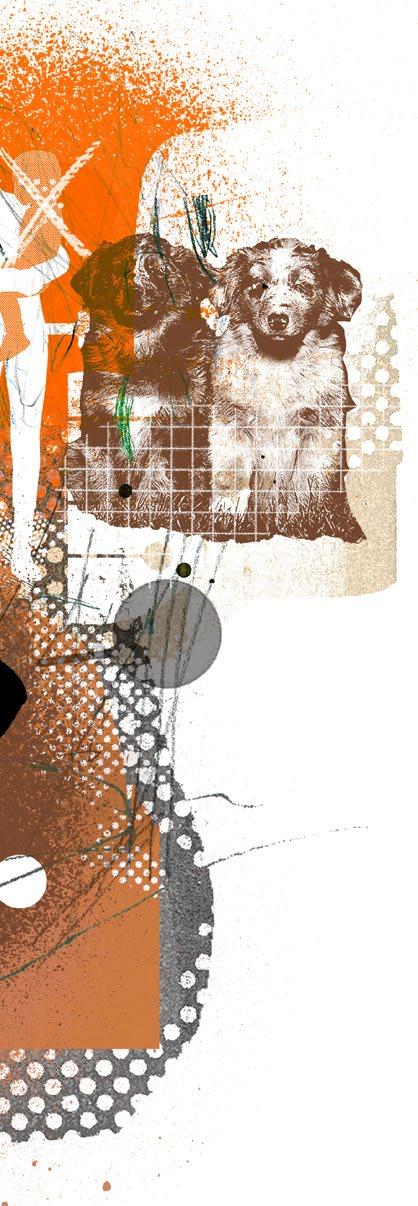
Research released in August 2022 by the University of Utah’s Kem C. Gardner Policy Institute illustrates this decrease.
In 2010, Utah held the nation’s top slot with 2.45 births per woman. But by 2020, that number had dropped to 1.92, placing the beehive state fourth behind South Dakota, Nebraska and North Dakota.
The generation of baby boomers — children born from 1946 to 1964 — has now given way to “baby busters” as falling birth rates track with the economic instability of the times.
Some Utah couples had to move back in with parents because of skyrocketing mortgages and rents. But Utah State University’s Marriage Handbook cautions that this living arrangement “rarely works out well.”
Along with budget woes, other factors also play a role. And a surprising number of couples are simply deciding not to have children.
West Bountiful residents Sheena McFarland and James Houchins met in their early 30s and married in mid-2017.
“When James and I first got together, we had thought kids would be in (our) path,” McFarland said. “Now we’re both 40. We knew the biological clock was ticking.”
After being diagnosed with Multiple Sclerosis, McFarland also learned that her prescribed medication could damage a developing fetus.
So she and Houchins explored adoption options and found that simply getting a child “through the door” could cost a
daunting $50,000.
“How do we budget that?” said McFarland, who works in college-level marketing and communications.
She and Houchins both had adoptive parents and grew up as the oldest child in their respective families — she of seven, he of three. So they’d already done their share of child-rearing.
“As we thought about both the financial and lifestyle sides of it, we made the decision that we love to travel so much that getting to explore the world was the option for us,” McFarland said.
For Salt Lake City resident Kim McDaniel, her decision not to have children came as a growing awareness that she could make that choice. As a teen, she discovered that one of her grandparents’ friends never had children.
“I don’t know if that was a conscious decision or if they tried, but I had this sudden realization that I could legitimately NOT have them and that nobody could make me,” McDaniel said. “It was a huge relief!”
McDaniel and her husband dated in high school during the late 1980’s and married in 1994. Now 51, she does marketing for the nonprofit Best Friends Animal Society and has no regrets about their decision.
”I appreciate the time and attention I can devote to my pets, my aging parents, my career, travel, hobbies, and my charitable interests,” McDaniel said.
Ogden residents Sarah Welliver met Ryan Duffy through Tinder in 2016. Now at 41 and 38 respectively, they proudly parent two lovable dogs. But children are
decidedly not in their future.
“We get to take our kids for walks and we don’t have to worry about college funds,” Welliver grinned.
Welliver and Duffy, both military veterans, lived in several states and countries before settling in Ogden.
“It’s sort of what you see, like an expectation,” Welliver said of her high school mindset about having children some time in the future. “But as I got older, I knew that wasn’t what I wanted.”
Still, she grappled with the guilt of not giving her mom grandkids.
“But we talked through that,” Welliver said, concluding that “letting your mom down isn’t a reason to have a kid.”
Duffy is fully onboard with their child-free family. “I think we all have a vision of what we want as an adult and mine was a wife and dogs,” Duffy said. But he considers it “selfish of others to say I have a social responsibility to have kids.”
Each of these couples had trouble identifying any downside to their decision.
“I have the freedom to do the hobbies I enjoy,” Duffy said. “I honestly have difficulty finding a con.”
Duffy, a firefighter at Dugway, enjoys woodworking in his spare time. Welliver worked as a photojournalist for several years and now serves as the public information officer for Utah’s Department of Health & Human Services.
“I felt I was trying to make the world better in small ways,” Welliver said of her demanding decade in journalism. “I still feel like I am. And that’s enough for me.”
I THINK WE ALL HAVE A VISION OF WHAT WE WANT AS AN ADULT, AND MINE WAS A WIFE & DOGS.





“Lowering Utah’s staggering student suicide rate through an inclusive educational environment is not, and should not be considered inherently political.”
That was part of a statement from Utah high school student Em Jenkins speaking at a Utah State Board of Education (USBE) meeting in January of this year. Jenkins was advocating for the use of students’ preferred pronouns in schools, as well as the freedom to display LGBTQ flags and symbols in school.
“LGBTQ symbols in schools have proven to lower suicide rates. I have personally witnessed these symbols connect suicidal and struggling students to adults that can support them,” Jenkins told the board. “Policies that allow LGBTQ inclusion through teacher and staff support lower student suicide rates, and I’m here as living proof of this reality. I’m here to urge the board to take action, as student’s lives are, quite literally, on the line.”
Jenkins’s remarks highlight issues that
Utah schools have struggled with in recent years. Utah had the sixth-highest suicide rate of U.S. states in 2019, according to the Public Health Indicator Based Information System, a state health database. In 2020, suicide was the leading cause of death for Utahns ages 10 to 17 and 18-24.
Research also shows that LGBTQ youth are at a higher risk of suicide than heterosexual, cis-gender students. A peer-reviewed study in the American Journal of Community Psychology found that “exposure to minority stress” accounted for this higher risk. The study defines minority stress as LGBTQbased physical harm, discrimination, housing instability, and change attempts by parents.

Utah public schools strive to create welcoming environments. Earlier this year, the USBE drafted a set of guidelines for a
The draft guidelines give recommendations on things like dress codes and bathroom use. The USBE received more than 20,000 comments on the guidelines — according to
a February 16 press release, the most it has ever received in a public comment window.
After months of consideration, the USBE decided not to formally issue the guidelines, but rather to leave those decisions up to local education authorities.
Some school districts have created their own explicit policies on transgender and LGBTQ students. The Salt Lake City School District, for example, has a web page which lists resources, rights, and accommodations for LGBTQ students, who are entitled to be referred to by their preferred name and pronouns, use the restrooms and locker rooms assigned to their gender identity, and participate in intramural sports in accordance with their gender identity. Participation in Utah High School Activities Association activities, including competitive sports, is subject to the rules of that organization.
Utah resident Olya Burtman taught third grade in a Utah public school for three years. She’s a cisgender female who identifies as queer. Burtman said she felt welcomed at school, and that students and staff also welcomed gender nonconforming students. Even though the community was very conservative, people were respectful of differences. “It was a place to be who you are,” she said. However, Burtman is also aware of LGBTQ youth who have felt trapped between their identity and their families’ expectations or their religious community.
“I knew some young adults who were born and raised in LDS families and they were transgender or gay and their family usually doesn’t accept them,” Burtman said. “This is so painful, so hard for a person, for a child or a teen, because they’re still dependent. They
want to be themselves but they need their family, they need their support.”
Around the time when the USBE was considering guidelines for gender identity accommodations, the Utah state legislature passed a bill barring transgender girls from participating in competitive high school girls sports. Proponents of the bill say they want to keep competition fair for girls — a right that was granted after years of women and girls fighting for their athletic potential and programs to be valued and supported. Opponents of the bill say it discriminates against transgender girls. Governor Spencer Cox vetoed the bill, but the legislature overrode the veto; later, a court ordered an injunction against the ban, triggering a fall-back policy: an appointed commission will evaluate students on a case-bycase basis, considering attributes such as height and weight, to determine whether a trans girl has an “unfair advantage” in a sport, or whether the student should be allowed to participate.
The sports policy adds another layer of tension to discussions about accommodations for and policies around gender non-conforming students in Utah public schools. Calls from some parents and advocacy groups to pull certain books from school libraries — including some books by LGBTQ authors or about LGBTQ characters or subjects — have also exacerbated discussions. At the same time, many Utahns carry on with a steady message of freedom and tolerance.
Burtman has two elementary school age children who attend, and love, Utah public schools. She talks to them about LGBTQ identities.
“They know that they are free to express their gender identity and they need to decide for themselves,” she said.
They want to be themselves but they need their family, they need their support.

Growing up gay in Utah county under the shadow of the Mormon church was definitely a unique experience.
I was always pretty vocal about the fact that I was attracted to men. When I was 16, all of my friends knew and none of them cared. I generally had a feeling of acceptance and love from my immediate circle of friends.
When I was 25, I finally came out to my parents. The situation did not go over well with my mom, who took some time to accept it.
As I made friends in the gay
community and heard other peoples’ stories, I realized that I never had to deal with a lot of the things that prior generations dealt with. I never feared for my life or safety, or worried that I would lose a job or my place in my community because of my sexual orientation. Even from a religious standpoint, I didn’t suffer too much because I never felt a strong connection to the Mormon church anyway. In short, I feel like I got off pretty easy.
As I’ve gotten older and watched the landscape change, I have seen a
tremendous amount of social progress. Thanks to marriage equality, same-sex couples are finally able to stand on equal ground with heterosexual couples.
Being gay, or having a gay family member or friend is no longer taboo in the majority of places. We are seeing worldwide acceptance on a much larger scale than in the past. This gives hope to people in our communities. Even in Utah, things have been on a steady upward trend for a while. This includes the 2015 statewide legislation to ban discrimination based on sexual orientation and gender identity in employment and housing.
While rulings like this are praised and lead to progress, I can’t help but think that it’s a problem that we even need them. The fact that my orientation and lifestyle specifically calls out the need for that protection is something I take issue with.
Recently, I was speaking with a neighbor who told me about his granddaughter. He said that she was, “like me” (gay), but struggling pretty badly with reconciling her sexual orientation and her faith in the Mormon church. He told me through tears that they have almost lost her to suicide more than once.
That was a problem I hadn’t thought about for a while. With that conversation, the realization came crashing into me — there are still people in our community struggling and hurting. People who have lived a good lives yet, no matter how obedient or strong of faith, they do not feel whole, and they suffer by feeling like something is wrong with them. (If this is you, you need to know that there is NOTHING wrong with you!)
Last spring I was hit pretty hard
by some of the things that I felt I had escaped from. I was let go from a new job and given no explanation as to why. All I had to go on was a word of warning from a coworker. He asked me when I realized I was gay. I was about to give him an answer when he interrupted me, saying, “You know you can’t talk like this with other people here, right? You really need to be careful what you say and who you talk to.“
When I started at my current job, I made the decision to keep my sexuality to myself (which is part of the reason I chose to write this using a pseudonym.) This decision was validated last June when I overheard many of my coworkers’ homophobic and intolerant remarks regarding homosexuality and pride month, and this is at a company that proudly flies the rainbow flag every June.
“Unfortunately, you work in an industry that you really can’t be gay in,” a friend told me. That is when I realized I’m not comfortable being “out” at work. I worry that I would be treated differently if people knew. Unfortunately, this is not a problem that would resolve itself by simply getting a new job.
I am not going to say that things have not gotten better, because clearly they have. Even though we need legislation to protect us, the fact that there are people in power who recognize that we need these protections and are actively trying to make life better for everyone means everything.
The closeted homophobes and the families and friends who tell us how much they love us and care about us, then actively vote for people who openly object to our lifestyle are the real problem.
 By Nicole Anderson
By Nicole Anderson
It was an ordinary day until Danya Topham’s husband, Mike began to prod her about attending a baseball game at Murray Park. Danya, an R.N. by trade, had just gotten off a long shift at the hospital and was ready for a nice relaxing evening at home. It was out of the norm for her husband to strongly encourage her to attend the ballgame, but this night was different. She decided it must be really important for her to go as she climbed into the truck, grabbing the handle and pulling the door shut. She didn’t know it yet, but that evening wouldn’t be just any night at the baseball game.
Tonight, unbeknownst to either Topham or her husband, would be one for the books—one where she would end up saving a man’s life.
As a registered nurse, saving people’s lives isn’t something that happens on a daily basis, but it does happen. Her repetitive CPR training that is required by the Intermountain Medical Center, kicked in immediately when she heard someone off in the distance shouting “call 911!” and with that, she ran across the field with her husband and son, Chase, in tow.
There lay a man, 57-years-old without a pulse. He had just suffered a massive heart attack which would take four stents to heal, but without the quick action of Topham, he may not have lived to tell his story.
A video of Topham performing CPR on the man went viral and was picked up by Inside Edition, who stressed the importance of performing CPR. The video tells Topham’s chilling story about how terrified she was that this man wouldn’t survive. The key, quick thinking and performing CPR, made all the difference in this case.
Dr. Kris Justesen at Alpine Wellness Center, has her own stories about CPR ‘what-if’ situations, but one thing we have learned
about life-saving techniques, Dr. Kris stated in an interview, is that “part of something is better than all of nothing.” In other words, do something, whether that be holding the head of the patient as Topham’s son, Chase did, call 911, get in line to help with chest compressions, or be the one to take charge of the situation.
Most of us as adults have come in contact with someone who has had a life-threatening situation, whether it be a car accident, a stroke or heart attack, or a myriad of other ailments that could occur. So, ask yourself: are you the one that drives by, or are you the one that stops to help? When writing this article, I sent out a survey to 50 community members asking these three questions:
1. Are you CPR certified?
2. Are you comfortable performing CPR?
3. Why or why not?
The results of this small survey were rather interesting. I learned that 1 in 10 people is afraid of being sued if they do something wrong, and 7 in 10 are afraid of doing something wrong. Only 2% of people stated that they felt comfortable performing CPR on anyone, let alone a stranger.
Most parents said they would try to do something if it was their child, but as a community, we must ask ourselves, what if I’m not with my child? What then? What if it’s my mother or father that needs help and we aren’t with them, what then? What if it’s my neighbor?
Many states including Utah have a “Good Samaritan Law”, which states in Utah Code #78B-4-501 that:
“A person who renders emergency care at or near the scene of, or during, an emergency, gratuitously and in good faith, is not liable for any civil damages or penalties as a result of any act or
omission by the person rendering the emergency care, unless the person is grossly negligent or caused the emergency.”
So, as Gary Sorenson, an EMT in the Salt Lake Valley stated, “It’s not as hard as you think it is, you won’t get in trouble if you try, and it’s better to do something instead of nothing.”
While speaking to Topham, Dr. Kris, and Sorenson, it became evident that CPR is the key to survival when a patient doesn’t have a pulse. The American Heart Association recently released their latest statistics on stroke and sudden cardiac arrest, stating that these ailments are a public health crisis.
“There are more than 356,000 out-of-hospital cardiac arrests (OHCA) annually in the US, nearly 90% of them fatal. The incidence of EMS-assessed non-traumatic OHCA in people of any age is estimated to be 356,461, or nearly 1,000 people each day. From survival to hospital discharge after EMS-treated cardiac arrest
languishes at about 10%.”
When hearing the low survival rates after experiencing a massive heart attack, it is important to remember that knowing CPR is of utmost importance and can make a positive change in someone’s life.

So, where do you get certified or take a class? There are lots of options available, many for a small fee. Below you will find several links to get you started in the right direction:.
• American Red Cross
• CERT Basic Training
• CPR Training Utah
• LifeSavers CPR
• Wilderness First Responder Training
Personally, I wish there wasn’t a cost to the classes because I believe that more people would attend. Money is tight and some people have the mindset “that will never happen to me,” and so they don’t sign up. It could also be made part of the driver license program, not that people would necessarily feel comfortable with it, but even a little knowledge is better than none.
Looking back at the evening events at that baseball game Topham recalls being slightly irritated that her husband parked somewhere other than where he usually parked. She was tired that night, but if he had parked where they normally did, that night could have turned out much differently. She has asthma, and if she’d had to run further, she could have been in a full-on asthma attack instead of at the ready. For whatever reason, whatever you call it; God, the universe, extensive CPR training, luck, etc., this man was supposed to live, and he is here to tell the story about how a regular person, who just happened to be a nurse and just got off work, saved his life.
PHOTO CREDIT: MARTIN SPLITT/UNSPLASH
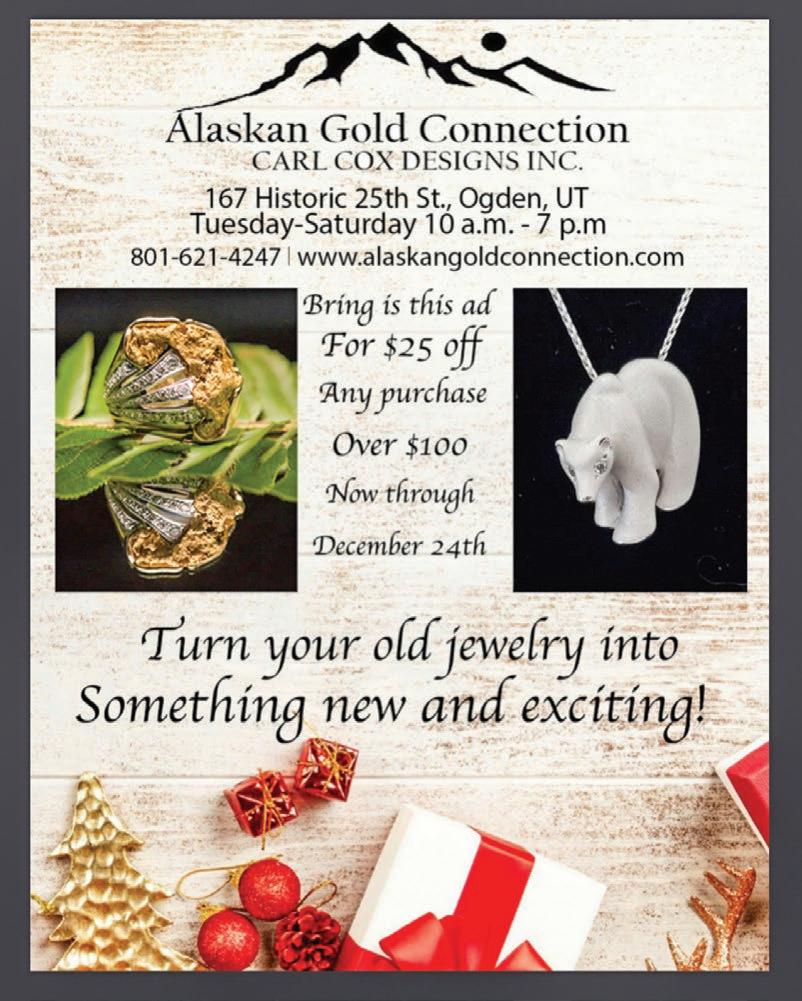

 By Ted Scheffler
By Ted Scheffler
As we embark on another new year, many of us have made resolutions that may or may not have already gone by the wayside. Or maybe you put off making any resolutions. If so, I have one for you: How about making your home kitchen a healthier place? That is something pretty much all of us can and should do. I’m not talking here about what to eat, but rather how what we eat is prepared.
There are a lot of kitchen tools, equipment and gadgets that can aid us in eating more healthily at home, especially if your goal is to reduce the amount of fat that goes into your food. Here are a handful of my favorites:
I have to admit that I was an air fryer skeptic for years. In fact, I was militantly anti-air fryer. But then a chef friend of mine who I have great respect for urged me to give air frying a try. So I ordered an air fryer — specifically the Cosori Air Fryer — and now I’m hooked. I don’t cook everything in my air fryer, but I use it at least once or twice a week.
Air fryers aren’t magic. They are essentially countertop convection ovens that do the same thing your kitchen oven does, but on a smaller scale, and
faster, while consuming less energy.
French fries are probably the most common food cooked in air fryers, because instead of dunking the potatoes into quarts of hot oil, you can make crispy, legit French fries in an air fryer using only a tablespoon or two. And I now make awesome air fried Buffalo chicken wings using a tiny fraction of the fat I once used. Less oil and fat = a big step toward eating healthier.
To prep, cook and serve food in as
PHOTOS BY TED SCHEFFLERsanitary way as possible, make sure you have the proper cutting boards in your kitchen. Meat, foul, seafood, and even veggies can carry germs and bacteria which can be left behind on your cutting board.
For a long time, I thought plastic cutting boards were the safest, since they are easier to sanitize and can go into a dishwasher, unlike wood ones. However, wood is antimicrobial, and research shows that wood is actually safer than
plastic. Who knew?
The key is to buy cutting boards made from harder, fine-grained woods like maple, say food safety researchers. Whatever type of cutting board you use, the key to safety is in washing them properly between uses.
Sous vide cooking allows you to cook foods that are oh-so tender and tasty at the precise temperature you want, getting rid of the guesswork of “Is it done yet?”

Not long ago, sous vide methods of cooking were very expensive, requiring pricy restaurant style sous vide machines. However, with the introduction of home kitchen sous vide tools like ChefSteps Joule and the Anova Precision Cooker and the apps that come with them, sous vide cooking is now within reach of most home cooks, making it possible to prepare everything from restaurant-quality swordfish steaks and beef short ribs, to pork tenderloins using little or no fat — all on your kitchen countertop.
Another way to reduce the amount of fat and grease you use is to grab a silicone baking mat for use in your oven. The non-stick mats allow you to use less butter, oil and grease and ensures that cookies, roasted vegetables and such don’t stick to your baking sheet or pan.
Trying to cut down on starchy carbs?
Pick up a vegetable spiralizer, an inexpensive kitchen gadget that can turn veggies like carrots, zucchini, sweet potatoes, beets and such into nutritious meals. Spiralized carrots or zucchini make a terrific substitute for wheat and egg pastas — just top them with your favorite chunky sauces. Some good spiralizer makers include Oxo, Paderno, Mueller, and Brieftons.
Looking to get more fruit into your diet? I am fond of single-serving personal blenders like the Nutribullet, Beast Blender, Ninja Nutri-Blender, and Magic Bullet Blender for making smoothies and shakes, as well as for food prep that would normally cause you to haul out a bigger blender. Not that you have to always use your mini-blender for healthy reasons. At a Red Butte Garden concert this summer, I saw a gal using hers to make on-thespot margaritas.

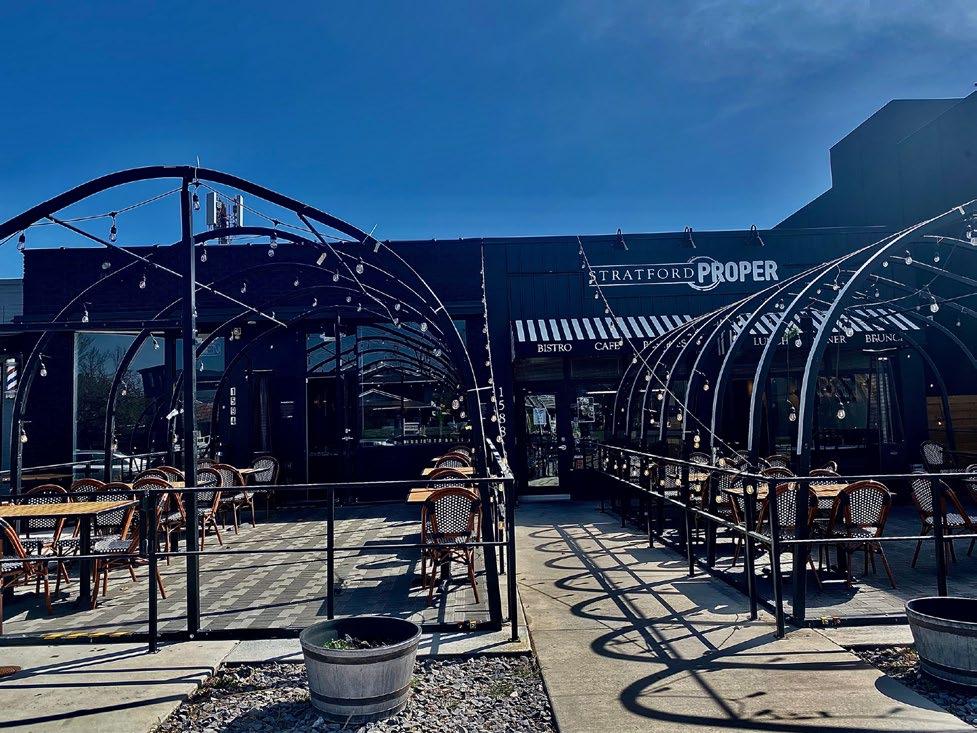
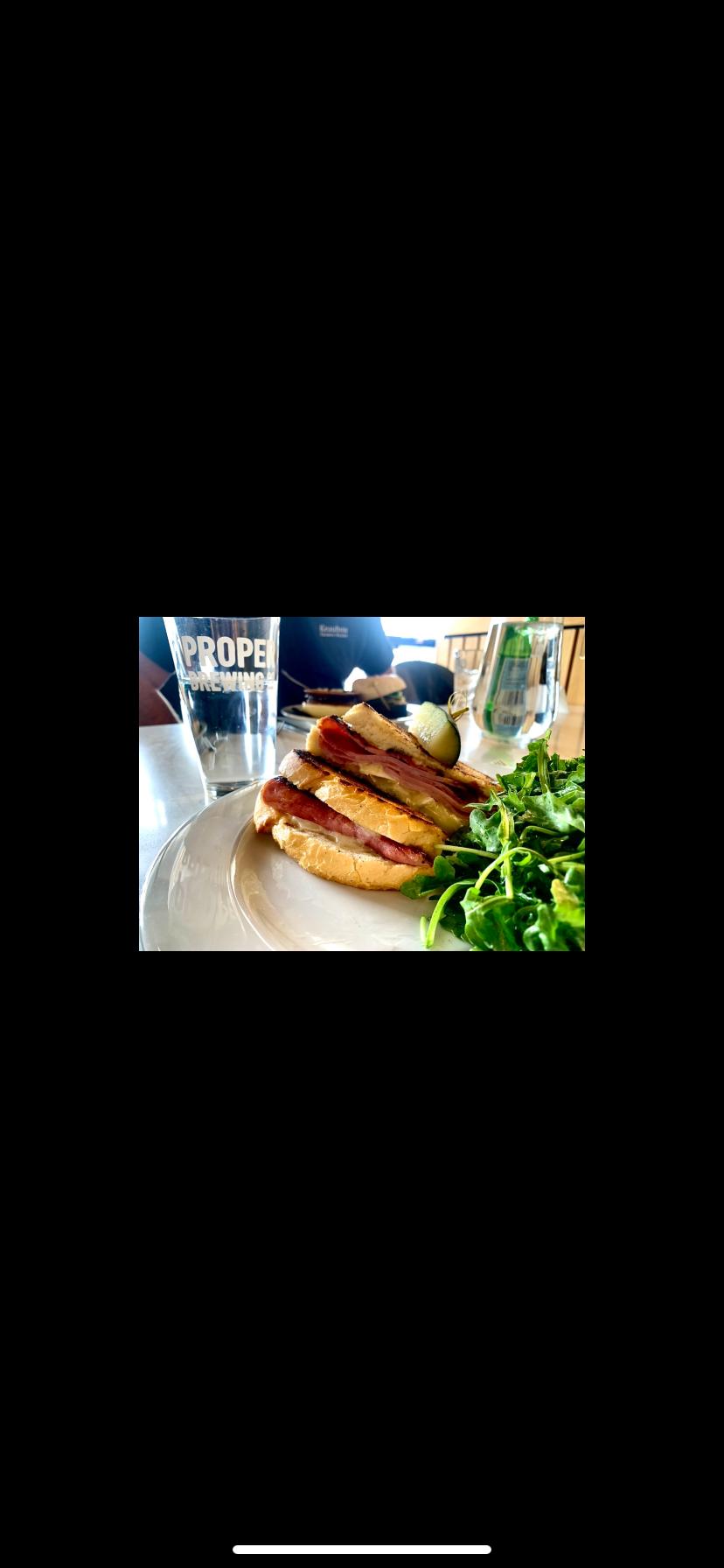
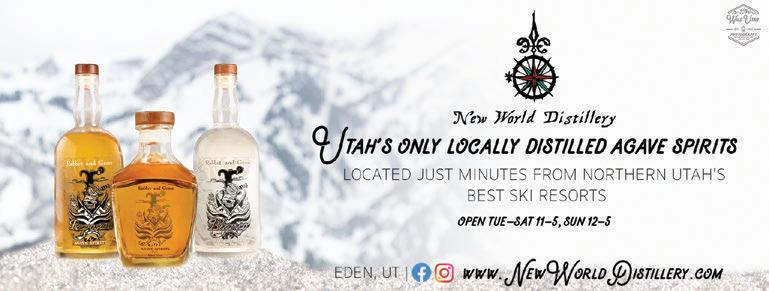
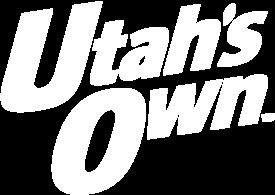
The Great Salt Lake as a public health hazard

There has been increasing media coverage in recent years resulting in growing awareness around the human health implications of the shrinking Great Salt Lake. It is becoming known among Utahns that the drying lakebed will soon become a public health hazard due to hazardous chemicals that have been recklessly discharged into the lake for decades by valley homeowners and businesses. The lake has never been under greater threat, and the health of the lake is inseparable from our own.
The Great Salt Lake Advisory Council states that the lake contributes $1.3 billion to Utah’s economy annually. It supports the ski industry by extending the season 5-7 weeks each year, and is responsible for up to 10% of snowfall east and south of the lake. Its presence is an essential aspect of the watershed in Northern Utah. Most importantly, everyone living along the Wasatch
Front requires the lake for their drinking water.
Supporting over 80% of Utah’s wetlands, the Great Salt Lake is the heart of our ecosystem. The lake ensures the flourishing of wildlife of all kinds and provides a home for millions of birds. It has significant hemispheric importance for ecosystems beyond our local region as it serves as a stopover for millions more migratory birds.
The lake is made up of half snowmelt and half precipitation. Both snowmelt and precipitation are determined by how much water is in the lake. When snowmelt in rivers is directed away from the lake for agriculture use, it is less likely to remain in our local region to ensure a robust water cycle.
As the lake dries up, it becomes a source of fine dust with high concentrations of toxic heavy metals and other chemicals which can travel great distances in wind storms, which are detrimental to human health when inhaled. As water levels continue to drop, unsafe
PHOTOS BY RICHARD MARKOSIAN & NAN SEYMOURlevels of lead and arsenic (among many others) will contaminate our air and the Wasatch Front may become unlivable. The health of the lake and its impact on human health cannot be overstated.
Local activist Nan Seymour calls herself a ‘lake-facing poet’. She is the founder of the River Writing collective and was the ‘poet-in-residence’ for the Antelope Island vigil first held during the 2022 Utah State Legislative session. Nan and her writing community are preparing to lead another vigil from January 16th to March 4th, corresponding with the 47-day 2023 Utah State Legislative session.
They will be camping at the lakeshore full-time and offering visitors activities like writing workshops, walks to the water, daily meditations, talks with master naturalists and scientists, and sunset rituals. Last year the activists and visitors collectively authored a 2580line poem entitled ‘Irreplaceable’.
In an interview, she shared that, “There’s concern across the board that as the lake continues drying up, human health will suffer as our air becomes contaminated with toxic dust. Our lake ecosystem is already dying due to increasing salinity levels. Brine flies are in an active state of collapse. Microbialites are exposed. Great Salt Lake scientists agree that we have less
than two years to turn things around before we lose the life force of the lake and the heart of the Great Basin dies.”
She finds it hard to talk about and yet says it plainly, “It’s more than just dust. We have to think about the vitality of the ecosystem we live in and how it’s all connected.”
“I am working to cultivate a culture of reverence toward water and to encourage a relationship of reciprocity” says Nan. She hopes that we will establish and uphold the legal personal rights of the rivers and lakes that make up our watershed so they can obtain at least equal legal footing with corporations.
“Water bodies have a right to be restored, to flourish, to live out their lives in a natural way, and to evolve in a natural way.” Nan hopes we will legally recognize them for their intelligence, sentience, and sovereignty.
“We are interdependent with the health and vitality of water.
We have no future without it.”
You can participate by joining activists at Antelope Island during the vigil. Nan warmly invites everyone to join their writing workshops and to go on nature hikes with them. All are welcome to join in a 20-minute meditation broadcast from the lakeshore at 7am daily during the vigil.

Parley’s Canyon and the Wasatch Mountains are at the forefront of a controversial debate about whether or not a proposed limestone quarry should move forward. Seemingly, the opinions surrounding the plan are overwhelmingly negative, even prompting a petition called “Save Parley’s Canyon.”

Carl Fisher, a respondent from “Save Our Canyons,” the organization responsible for the creation of the petition, says, “Save Our Canyons learned about this application about
a year ago. It was filed right around Thanksgiving time in 2021, when Tree Farm, LLC filed an application before the Utah Division of Oil, Gas and Mining (DOGM). As we reviewed the application (and in light of the other battles we were fighting, like a gondola in Little Cottonwood Canyon), we decided we should hire some outside legal counsel to help with this project.”
Still, the road to determining whether or not the project will proceed is a rocky one. In the thick of legal debate, those protesting the mine
are determined to obtain the land at an agreeable price to prevent the construction of the mine. Regulators have approved the project as of August 2022, according to reporting by the Salt Lake Tribune, despite the public and county officials attempts to halt it. However, it was approved with permit requirements that will continue to stall the actual act of mining.
“Our petition stemmed from the fact that we don’t have a high degree of confidence that Utah’s policies or policy makers will do anything to protect our environment. We wanted to start a conversation that suggested not only was there opposition to this proposal, but there was public interest in trying to work with the land owner and/ or his gravel pit operators to see this land protected from mining activities, permanently protected for the benefit of people and nature,” says Fisher.
Granite Construction Company is the global operational company responsible for filing for the limestone mine, along with the landowner and partner of the project Tree Farm, LLC. To public knowledge, the original paperwork contained limited information, but was requested at 20 acres, which by law, qualifies for a quick review. This would have made the process relatively easy to get through, but that was before the public found out about it.
Though 20 acres of land is considered a small plot for mining, the impact of the mine could be detrimental to the environment, residents, infrastructure and more. In April of this year, Salt Lake County officials passed a law and zoning change that prohibits mining and gravel pits in the Wasatch Mountains. According to the petition, “nearly all county representatives cited they received hundreds of letters asking them to prohibit this destructive use from further tearing apart our Wasatch Canyons.”
The DOGM received objections from Salt Lake City and Milcreek, which prompted a further look into the project by John R. Bazza, Director of DOGM. One of the responsibilities of DOGM is to ensure that mining propositions ensure public health and safety. The two objecting cities share concerns about the water supply and dust kickup that will be caused by the mining operation. Seismic shaking and wildfires are also concerns for cabin owners neighboring the site of the quarry in the Mt. Aire Canyon Community.
While Granite Construction Company’s filing registered as a small mining operation under 20 acres, records show Jesse Lassley, the original requestor for the quarry permits, had previously filed for the land to be used

at 400 acres of mining ground over 100 years. This has created urges for the operation to be reviewed as a large mine, rather than the small one it is currently being reviewed as. At that time, before the April law preventing new mining operations was passed, the determination would have been made by the state based on a 2019 law. With the new guidelines, they will be required to obtain permits from Salt Lake County, who seem to be opposed to the operation.
This is only the beginning of what is inevitably going to be a long-lasting battle between the parties. When the actual digging will become active is still unknown. Until that is determined, protestors urge those who appreciate the wildlife, scenery and natural elements of Parley’s Canyon to sign the online petition.

According to Fisher, “So far as the effectiveness, working to protect Utah’s environment will never have enough support. You know you are successful
when a damaging proposal has been stopped, when the dozers have been called off. Our founder, Gale Dick, liked to remind us that every loss is permanent and every victory is temporary in our line of work. Land and water laws seldom work for those resources anymore, they’ve been eroded for 50 years. We used to rally and have petitions to uphold the law that protected the very lands and waters we are fighting to protect today — the difference is today, the law isn’t nearly as strong as it was and the pressures are many times as great. We are no longer petitioning to uphold the law, rather to strengthen it, but we are standing below looking straight up at what used to be a conservative baseline. This is a long way of saying, there’s still an active proposal to mine the Wasatch, so the petition, the law, nor your elected officials have been successful to date — they are all a work in process with people on different sides working different angles every day.”
BY SAVEPARLEYS.ORG By Richard Markosian
By Richard Markosian
The downtown Salt Lake City retail and restaurant marketplace has seen some big shake-ups since the end of lock-downs.

The demolition of the former Sears, which bookended State Street for over 65 years, now leaves a very large visible void. But State Street has seen some positive developments. iconoCLAD clothing (which offers costumes and clothing for festivals and raves) opened their second location at 855 State. A new coffee shop, Merch Coffee at 1550 South State, opened by Adam and Shelby, now serves the area and SLCC South campus students.
State Street was once the place for pawn shops. Now there are none north of 2100 South. But State Street now has a medical cannabis shop — Dragonfly Wellness (card-holders only).
There are now two vegan houses and several tattoo parlors. State Street used to be where young driving-age kids would “drag state.” A friend of mine met his wife doing that. Is that still a thing? But maybe the appeal of The Fast & The Furious has waned.

The number of restaurants that have closed downtown is very sad: DP Cheesesteaks, Medici Pizza, Les Madeleines and Indian Street Food that only lasted a year on 200 South has been replaced by Laziz Kitchen.
New restaurants have popped up, including the latest creation by the Bourbon Group, adding yet another stellar eatery on 231 South Edison Street called “Franklin Ave.” in the former Salt
Lake Harold building where there was once a theater with a famous trap door which led to a bar. It’s a great upcycle of historic architecture.
The sad departure of the Pantages Theater leaves a void on Main Street, but the street is showing renewed life and vitality despite the sad losses to the businesses that were demolished along with the Utah Theater: Reggae Roots, Ary’s Barbershop and Beckett & Rob custom suites (although they still have a location in Sandy). Read about the moving of Southam Gallery in this issue.
Sadly, both art galleries on Main have closed. Hope Gallery, a true “hidden treasure” of Salt Lake, also closed in the historic Tracy Loan and Trust Company Building. While the works of Danish master oil painters can no longer be viewed on Main Street, the building will soon become another upscale restaurant under the Pago Group.

Full bar, food, pool tables, pingpong. 3928 S Highland Dr, SLC + 8136 S State St, Midvale
BEERHIVE PUB
Main Street just got a whole lot cooler! A big, gorgeous bar, hundreds of great beers and good company. 128 S Main St., SLC
Good pub food, sports bar and pool tables. 1717 S Main St, SLC
Home of SLC’s best kept secret. 331 S Main Street
BOHEMIAN BREWERY
Czechs know: Amazing food. Amazing beer. 94 E 7200 S
CHAKRA LOUNGE
Tapas, exceptional cocktails, DJ. 364 S State, SLC
COTTON BOTTOM INN
Classic aprés ski, famous garlic burgers. 2820 E 6200 S, Holladay
Great food and atmosphere for a night out. Trolley Square
Watch the Utes and drink a stein in Sugar House. 1063 E 2100 S

GRACIE’S
Service, drinks, food and ambience—all top notch. 326 S West Temple, SLC

Great place to watch the game and have a pint. 31 E 400 S, SLC

Offering spirits & bar food, live music. 3200 E Big Cottonwood Canyon Rd, Cottonwood Heights
Live dueling piano bar in the heart of downtown. 242 S Main
Perfect spot to watch the Jazz and enjoy a burger and a brew. 677 S 200 W
Excellent food and a friendly atmosphere. 135 W 1300 S PIPER DOWN
SLC’s Most Amazing Rooftop Patio. 1492 S State St, SLC
POPLAR STREET PUB
Good food, great selection of local beers. 242 S 200 W PROPER BREWING CO.
Craft beer and a full bar. Food available next door at Proper Burger Co. 857 S Main St., SLC
Utah’s most awarded brew pub: taste why. 254 S 200 W + 1640 W Redstone Center Dr, Park City


Where great dining and beer was born in Salt Lake City. 147 W Broadway (300 S)

A must see ‘Beervana’, 100s of beers. 645 S State St., SLC
Renovated 19-century boiler room with a patio for clever small plates, pub classics & craft beer. 32 S Exchange Pl, SLC
A small pub attached to Utah’s biggest brewery. 1722 Fremont Dr. (2375 W)
Superb food and beer. 2110 Highland Dr, SLC + 250 Main Street Park City
High West and a great vibe classic feel. 323 South Main St.

Birding on Skis at Alta. Pre-registered skiers can help expand Alta’s bird list with a bird survey in conjunction with Tracy Aviary. Held from 9am to noon, the event is open to those 12 years of age and older, with intermediate ski experience. Must have a lift ticket and pre-register at Alta.com. The tour meets at the bottom of Collins Lift. The event will continue every second and fourth Thursday of the Month through March 23.

Strictly Ballroom in Pleasant Grove. Ballroom dancing at the Pleasant Grove Rec Center, 547 S Locust Ave, Gym 1, from 7pm to 9pm. Tickets ate $5 at the door and instruction will be provided by Alison Wakefield.

Sundance Film Festival. This premiere world-class event will be held in various venues including theaters in Park City, Salt Lake City, and Sundance. An on-demand package for viewing at home is also available. Visit sundance.org for a full list and ticket information.
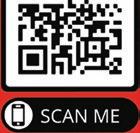
Winter Festival Tattoo Convention in Ogden. This event will be held at the Ogden Union Station, 2501 Wall Ave. Local tattoo artists,shops, food trucks, and vendors will be on hand. The Union Station Museum will be open to the public. Admission to the festival is $10.

Lunar New Year at University Place Orem. Celebrate the Year of the Rabbit at University Place Orem, 575 E University Parkway. Lion Dance Parades will be held at 12pm, 3pm & 6pm, with fireworks after the 6pm parade.

Moab Music Festival Winterlude concert. Concerts include free jazz on Friday, January 27 at Josie Wyatt’s Grille, Hoodoo Moab Hotel at 5:30, admission is free. On Saturday January 28 the Alison Shearer Quartet will be at the Hoodoo Ballroom at 7pm. General admission tickets at $30. On Friday, February 3 the Winterlude Showcase will be held at Star Hall at 7pm and on Saturday, February 4 a Musical Story Hour children’s event will be held at 10:30am at Star Hall. Both of these events are free.
